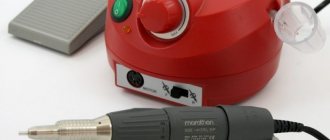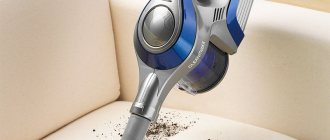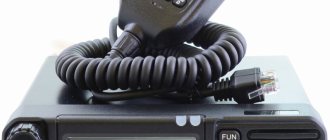Hearing deterioration can be the result of injury, a consequence of a chronic or acute course of the disease, or age-related changes in the structure of the ear apparatus. In any case, to maintain the quality of life, it is necessary to compensate for this deficiency. Today this is possible thanks to the existence of a large number of special devices. If you're considering whether to use one of these, you need to think about how to choose a hearing aid? After all, manufacturers offer the opportunity to choose.
Device class
The price of the device depends on this indicator. When answering the question of how to choose a hearing aid, decide on the amount you are willing to spend. You also need to understand under what conditions the device will be used and what tasks it must perform. In this regard, there are 5 levels.
- ✔ Basic.
Price from 5 to 15 thousand rubles. The set of functions is very limited. Most often, devices have 1-2 compression channels. Suitable for people living in a quiet environment. - ✔ Economy.
Cost from 15 to 30 thousand rubles. A very popular class. The functionality has been expanded with high-quality noise reduction systems. It is possible to eliminate acoustic feedback. Hearing aids have 4-6 compression channels. They can be used outdoors and in transport. - ✔ Standard.
The price is within 30-50 thousand rubles. The set of functions is considered standard. Changing operating parameters occurs automatically. Number of channels - 10-12. It is possible to synchronize two devices or wireless connection. - ✔ Business.
The cost varies in the range of 50-80 thousand rubles. The working functionality has been significantly expanded. The number of channels reaches 16. Synchronized devices can exchange complete information. They are used in high-noise environments when it is necessary to achieve high-quality sound. - ✔ Premium.
Price from 80 to 120 thousand rubles. The number of channels has been increased to 20. These devices have a maximum range of functions and can be used in the most difficult acoustic conditions.
Gradually, the clarity of differences between classes is erased. Today, the functionality of Economy and Standard class models allows them to be widely used in a variety of conditions.
Bestsellers!
Hearing aid Aurica EVERY 1660DM 13
A digital sixteen-channel hearing aid of the silver category for those who lead an active lifestyle and continue to work: home, telephone, conversation, TV, store, playground, street, work. Ideal for mild to moderate hearing loss. Find out more >>>
Hearing aid Microtech Thrive w30 BTE
A gold category hearing aid is an ideal solution for people who value the taste of life (noisy parties, travel, street, work, playground, home, telephone, conversation, TV, store). Ideal for all degrees of hearing loss. Find out more >>>
Choose a hearing aid
Understanding Hearing Aids
By taking a little time to understand how hearing aids work, you can become an informed consumer who is not intimidated by the wide variety of hearing aids on the market. Below you will learn about the main parts, styles and technological functions of hearing aids.
Hearing aid parts
Knowing the basic components of hearing aids will help you understand the product descriptions you read when purchasing.
- Microphone:
This is the part of the hearing aid that picks up the natural sounds around you. It converts the sound signal into an electrical impulse. Many hearing aids have multiple microphones that are visible only as tiny holes on the surface. A directional microphone is a microphone that focuses on sounds in front of you, making conversations clearer. Note that you can purchase remote microphone accessories to improve audio perception in difficult environments, such as noisy restaurants. - Loudspeaker/Receiver
: This is the part of the hearing aid that converts the processed signal back into sound. - Eartips or earmolds:
Earpieces and earmolds are the parts of the hearing aid that fit snugly into the outer ear canal. Domes are typically soft silicone spheres that are similar to the ear tips of in-ear headphones, while earbuds are often made of hard plastic or silicone, molded to the individual shape of the user's ear. Any of them may have a small hole for ventilation. - Battery:
The battery is the power source for the hearing aid. Disposable batteries typically come in the following sizes/colors, in order from smallest/shortest life to largest/longest life: 10 (yellow), 312 (brown), 13 (orange), or 675 (blue). Rechargeable batteries are also becoming quite common now. Lithium-ion batteries are generally the best rechargeable batteries, but silver-zinc or other rechargeable batteries are sometimes used as well. - Receiver Wire/Wire:
In styles where the hearing aid housing is behind the ear (BTE, RIC, RITE), the wire will come out from behind the ear and be in or near the canal. A dome or, less commonly, ear tip will be at the end of the wire and fits snugly against the ear.
*Note. Analog (non-digital) hearing aids are sometimes available, but we haven't included them on our list. Digital hearing aids provide better sound quality, and most major hearing aid manufacturers no longer make analog hearing aids.
Types of hearing aids
The information below will help you understand the most common types of hearing aids. You may find it helpful to look at the ear diagram when reading descriptions of the various models. Note that smaller hearing aids tend to have more problems treating severe or profound hearing loss, but the power varies by manufacturer and gets better every year.
In-ear (ITE) options
- Traditional Ear Tips (ITE):
A custom-made device made of plastic and/or silicone that fills half or all of the concha area of the outer ear. This design covers the ear canal, but does not enter it. Its unique contours hold it securely in place as it fits like a puzzle piece into the patient's ear. It may be about the size of the patient's thumb or smaller, with volume control buttons/wheels on the front panel. Its size makes it easy to handle. - In-the-canal (ITC):
Nothing about this type of hearing aid is significantly different from an ITE, except that it is somewhat recessed into the ear canal and will be smaller than an ITE. Like ITE, it is usually easy to operate and has physical buttons. - Completely in-the-canal (CIC):
This device is typically placed 1 to 2 millimeters inside the ear canal. Its bezel will still be visible, but it will be more discreet than the ones above. It is significantly smaller than the traditional ITE style. - Hidden In-Canal (IIC):
The most discreet of all in-ear/canal styles, it fits so deep into the ear canal that the dark faceplate is virtually invisible. These devices are typically the smallest hearing aids available. Some people cannot wear them due to narrow ear canals. Sometimes the line between the CIC and IIC models is blurry.
Behind-the-ear (BTE) types
- Traditional behind-the-ear (BTE) device:
The BTE device has an elongated housing that sits behind the ear and contains all the main components. A thin, clear tube passes through the ear, transmitting sound into the ear through the dome or earmold. Many styles will be almost or completely hidden by the top of the ear, but the size varies. - Remote Receiver Interface (RIC):
This hearing aid is almost identical to the BTE design. The only real difference between the BTE and RIC models is that the receiver will be located inside the dome or ear tip rather than behind the ear in the RIC. Because this component is located in the ear canal, the BTE will often be slightly smaller than the BTE of traditional BTE hearing aids. This type is sometimes called phone-in-the-ear (RITE).
Important Specifications
Programs
A program is a preset sound profile, usually created specifically for you, that you can switch your hearing aid to. Different programs are designed to provide optimal sound quality in different environments, such as restaurants, cars, quiet places, while listening to TV, etc. You can switch between programs in various ways, such as using physical buttons, applications, remote controls, etc. etc. Many hearing aids are so advanced that they can detect when you need to switch programs and do so automatically.
Please note that a program is different from a channel. Channels are segments of audio frequency bands that you can customize to create your own program.
Audio processing
Brands are developing their own methods to digitally reduce unwanted noise and enhance voices for better speech recognition. In advertisements you will see notes about noise reduction, feedback reduction, wind reduction and more. Many also have a tinnitus masking feature that plays soothing sounds for those who find the ringing in their ears unbearable. Ultimately, most brands will likely have the same quality of unwanted noise reduction, but they will call the technology by different names. It might be a good idea to know how hearing aids process sound, but that shouldn't be the only feature you base your decision on.
Bluetooth
Bluetooth is a common form of technology used to connect electronic devices with each other. Using Bluetooth to connect your hearing aids to your phone, smart TV or other devices can mean better sound quality for music, TV, phone calls, etc. Connecting to your phone via Bluetooth can also give you access to an app from the manufacturer that allows you to switch programs. Some Bluetooth-enabled hearing aids require a special Bluetooth accessory ("streamer", "intermediate device", "remote") to act as an intermediary. Other hearing aids can connect directly.
Telecoil
A telecoil (T-Coil, T-Switch) is an optional component that uses electromagnetic radiation to receive sound in a different way than a traditional microphone. Businesses, churches, theaters and other public places can equip their rooms with a telecoil system (loop system) that will transmit sound through a special wiring system installed around the perimeter of the room. Those with hearing aids can turn on the telecoil to get this sound without additional background noise.
Housing design
If you don't know how to choose a hearing aid without a doctor, and where to start, think about what size case will suit you. He can play a decisive role. There are behind-the-ear, in-ear and large pocket models. Here are some characteristics of the devices.
- ✔ Pocket. The rectangular case is convenient to carry in your pocket. A speaker is inserted into the ear canal. The body is connected by a long cord.
- ✔ BTE. The body is located behind the ear. A transparent sound guide extends from it, and an ear canal is inserted.
- ✔ With a remote receiver. There is a small housing above the ear. A thin sound guide is placed in the receiver by the receiver.
- ✔ ITC. A miniature device is deeply immersed in the auditory passage and secured behind it with a second bend. Such a pattern is impossible to notice.
- ✔ CIC. The device is located on the outside of the ear canal.
- ✔ TIC. The canal model extends slightly beyond the ear canal and is partially located inside the shell.
- ✔ HS. They occupy about half of the auricle.
- ✔ FS. Occupy the auricle completely.
Patients who want the SA to be invisible prefer devices with a miniature body. For older people, cosmetic issues fade into the background. If you do not know how to choose a hearing aid for an elderly person, you should prefer a simple and reliable model with a large body and controls.
Bestsellers!
Hearing aid Aurica Pixel 440CIC
Digital hearing aid of the bronze category for those who lead an active lifestyle and continue to work: home, telephone, conversation, TV, store, playground, street, work. Ideal for mild hearing loss. Find out more >>>
Hearing aid Microtech Focus 30 BTE
A gold category hearing aid is an ideal solution for people who value the taste of life (noisy parties, travel, street, work, playground, home, telephone, conversation, TV, store). Ideal for all degrees of hearing loss. Ideal for all degrees of hearing loss. Find out more >>>
Choose a hearing aid
Myth #6 “Hearing aids make an unpleasant whistle”
Until a couple of years ago, hearing aids actually produced an unpleasant whistling sound called a “feedback whistle” that occurs when someone or something is too close to the hearing aids. Manufacturers have taken into account this frequent complaint from users. And today, modern hearing aid models have technology that completely suppresses feedback whistling without sacrificing amplification. In the catalog you can familiarize yourself with models of hearing aids from the Oticon brand, which completely relieve the user of annoying whistling thanks to the innovative Open Sound Optimizer technology, which is especially important for people with severe and profound hearing loss.
Sound processing methods
There are 2 processing methods. Analog and digital.
In the first case, the microphone converts sound waves into an electrical signal. It is then processed by an amplifier. The amplified wave is fed to the speaker. This way the sound can be greatly enhanced.
The digital method involves converting a wave into a sequence of discrete numbers. In digital models, this happens with the help of an element such as an ADC - an analog-to-digital converter. The digitized sound is then processed by a special program. After that, it passes through the DAC (inverter converter) and is fed to the speaker in the form of a wave.
In this case, you will have to trust an audiologist. If you only need sound amplification to compensate for your hearing loss, he will recommend an analog model. If the hearing loss is sensorineural in nature, then special signal processing will be required so that the final result is understandable to such an ear. Digital processing is indispensable here.
Myth No. 7 “You can cure hearing loss without using hearing aids”
If the hearing loss is chronic (3 months or more) and the treatment turned out to be ineffective, the only way to improve hearing is its correction, i.e. selection and adjustment of hearing aids. Since in the absence of sound stimulation for a long time, the brain gradually begins to analyze incoming sound information worse.
In some cases, hearing-improving surgery may be possible. An audiologist will be able to determine whether there are indications for such an operation based on the results of an audiological examination.
If you notice the first signs of hearing impairment in yourself or your loved ones, do not waste time on experiments, seek help from an audiologist who will determine the nature and degree of hearing impairment and select an effective correction method.
Selection advice
Even if you already know how you will select a hearing aid for an elderly person, you should not rush. Having chosen a model, test it. This procedure involves full control of a specialist. During simple tests, the patient will have the opportunity to evaluate sound quality and speech perception. So you can try several models.
Agree to the maximum period of trial wear. Only during this period is it possible to assess how suitable the hearing aid is and whether wearing it causes discomfort.
How to choose the right hearing aid for an elderly person?
The hearing aid is selected in several stages. First you need to undergo diagnostics, which will help identify the degree and nature of hearing impairment. A professional examination has no side effects and does not take much time, since it is performed using modern equipment that allows you to most accurately monitor the dynamics of changes in hearing indicators. Based on the examination data, a hearing aid is selected and adjusted to suit the identified hearing loss. To ensure absolute tightness (due to the loose fit of the earmold to the ear, the device may whistle) and reliable fixation, you can order the production of an earmold based on an individual impression. For more information about this procedure, please contact our specialists, who will discuss in detail how long it will take to complete an accurate impression of each ear.
Take a hearing test online
What does a hearing test tell you?
An online hearing test allows you to quickly and easily determine your hearing status. In just 3 minutes you can determine its spiciness. The result of the hearing test is called an “audiogram” and is an indication for doctor’s prescriptions.
We suggest the following hearing tests: signs of hearing loss; online frequency hearing test; hearing test in noise; speech recognition; modeling signs of hearing loss.
Take a hearing test
Read more on the topic “Useful information about hearing”
Why you don't need a hearing aid
The Academy of Hearing has been working with people suffering from hearing loss for over ten years. During this time, we have collected a whole collection of rumors, myths and misconceptions that surround this disease and the means of its correction - a hearing aid. We collected the most popular ones and asked our experts to comment on them in an easy, understandable and ironic way of “bad advice.”
Voice and voice production
The main carriers of information for humans are signals that are generated by the senses, delivered to the brain and processed there. First of all, these are acoustic speech signals of the voice. In this article, we will take a closer look at the mechanisms of speech sound, voice and vocal production, and also find out why parrots can speak almost the same as humans. Read more >>>
Tinnitus: causes, treatment methods, consequences
Tinnitus is a widespread phenomenon and one of the most common diagnoses in the practice of treating ENT diseases. In 1999, in Germany, on behalf of the German League of Physicians, a large study was conducted in the field of auditory acoustics, during which it was found that tinnitus entails psychosomatic disorders such as sleep disturbances, depression and increased audiological stress. Read more >>>
How often should you change your hearing aids?
Do you remember what feelings and emotions you experienced when you first put on your hearing aid? How much brighter and more fulfilling has your life become, filled with clear sounds and voices? If several years have passed since then, are you sure that your hearing is still as good? Often, people who use hearing aids begin to notice over time that they begin to hear “somehow differently.” more >>>
Hearing aid or hearing amplifier: making the right choice!
Typically, a person loses their hearing gradually. First, the quietest, most inexpressive sounds and subtlest nuances “disappear.” Because of this, it is difficult for a person to ascertain a change in his ability to hear. Quite often, people try to ignore minor hearing loss until the truly important sounds for everyday life, such as the cry of a child or the sound of a car approaching, begin to disappear from the range of audible sounds. Read more >>>
Hearing is under threat!
How smoking, alcohol and medications affect a person's ability to hear. There are many reasons for hearing loss, and, of course, the first ones that come to mind are ear infections, damage to the eardrum, a foreign object in the ear, excessively loud music, etc. However, few people think about what can cause hearing loss Bring smoking, alcohol or medicine purchased at a pharmacy. Read more >>>
Read all useful articles about hearing >>>
What characteristics of hearing aids should I pay attention to?
Modern devices allow you to implement many functions. Depending on the model, the device can have from 20 to 50 characteristics. Main characteristics of hearing aids:
- Power (maximum output sound pressure level). Hearing aids can be:
- low power – designed to compensate for 1-2 degrees of hearing loss;
medium power - to compensate for 2-3 degrees of hearing loss;
- powerful – compensate for 3-4 degrees of hearing loss;
- super-powerful or super-powerful – compensate for grade 4 hearing loss and deafness.
- The range of frequencies transmitted by the hearing aid - the lower frequency limit varies from 200 Hz to 400 Hz, and the upper limit - from 3 to 10 kHz. The wider the frequency range of the hearing aid, the better the quality of speech and music the patient hears.
- Number of hearing aid channels. Most modern hearing aids are multi-channel. The minimum number of channels is 2. Channels are bands (frequency segments) within which the audio signal is processed. There are also channelless hearing aids - sound signals in such devices are continuously processed at high speed throughout the entire frequency range. This requires significant computing power.
- Microphone type: omnidirectional - its operation does not depend on the direction of the sound source, perception is the same from all sides; Directional - better perceives sound coming from a certain point in space around a person. This type of microphone allows you to better perceive speech in noisy situations. Directional microphones can have a fixed (set) directionality, as well as adaptive - it changes depending on the sources of noise and speech.









